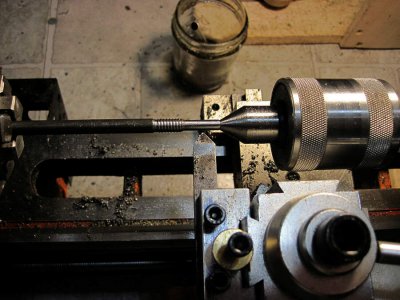- Joined
- Jul 28, 2017
- Messages
- 2,561
I don't think your thread cutting problem is due to a fundamental limitation of the lathe. Certainly not when threading a 1/4" rod. Something else is going on. Excess stickout is a good candidate. It could cause something that could be classified as extreme chatter, where the work deflects until the tool load becomes high enough to cut a chunk, then it springs back and the cycle repeats. Try threading the work with much less stickout, or a scrap piece that is much larger in diameter (so it will deflect less when being cut). Another option would be to support the end with a live or dead center in your tailstock; but that will only get you so far, so to speak. If you really need to thread a long thin rod you will need either a travelling rest and/or use a die to thread it.
Other things that could cause cutting problems include directly plunging the cutting tool into the work, rather than advancing it at ~30 degrees. The 30 degree advance restricts the cutting load to just one edge, rather than _two_ when plunge cutting.
I know that a number of folks here just plunge cut to make threads but these little lathes are not all that rigid compared to "real" lathes. Once you figure out how to coax your lathe into doing what you want, you will find that a lot of their apparent limitations aren't so big a deal.
Other things that could cause cutting problems include directly plunging the cutting tool into the work, rather than advancing it at ~30 degrees. The 30 degree advance restricts the cutting load to just one edge, rather than _two_ when plunge cutting.
I know that a number of folks here just plunge cut to make threads but these little lathes are not all that rigid compared to "real" lathes. Once you figure out how to coax your lathe into doing what you want, you will find that a lot of their apparent limitations aren't so big a deal.




